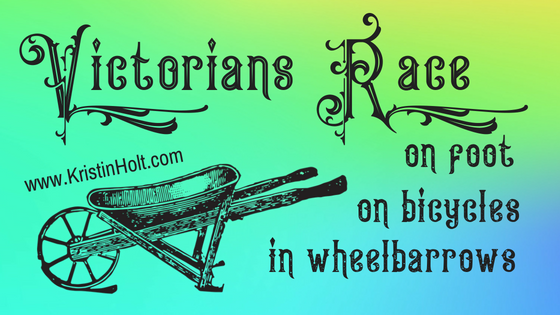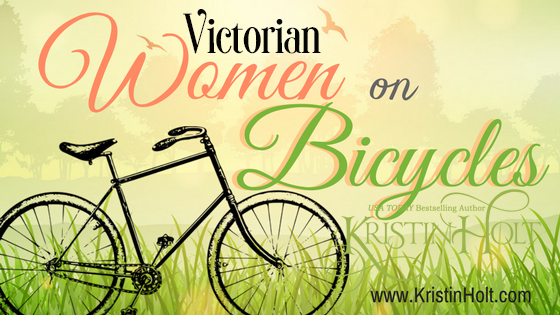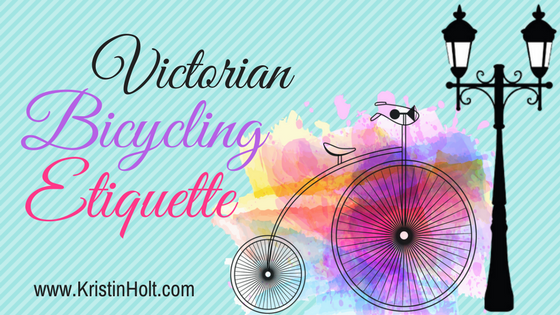
by Kristin Holt | Jul 4, 2018 | Articles
A key scene within Isabella’s Calico Groom (Calico Ball: Timeless Western Collection) is on Independence Day in Evanston, Wyoming Territory (a week shy of Wyoming’s acceptance into the Union as the 44th State). In keeping with the historical favorites when celebrating July 4th, the characters took note of the races–on foot, on bicycles, and in wheelbarrows. Victorian Americans enjoyed a wide range of contests with appealing prizes (cash, clothing, shoes, jewelry, etc.). Would you rather compete in a bicycle race, or in chasing a greased pig?

by Kristin Holt | Feb 21, 2017 | Articles
A bicycle built for two plays a role in my new release, Sophia’s Leap-Year Courtship. Such bicycles are romantic–and they’re making a resurgence. I see them in romantic bridal photography, all over Pinterest, and the research for the book showed me just when they were originally “a thing” and how they could fit into this book. Come see!

by Kristin Holt | Feb 18, 2017 | Articles
Though American Victorian women took to the safety bicycle in droves, newspaper and public notices of the day show that women on bicycles were not widely accepted. A public service announcement from The Woman’s Rescue League proclaimed that women on bicycles were immoral, vulgar, disease-ridden, and unwomanly. Such attitudes didn’t keep women from their bicycles, and with the advent of the new Safety Bicycle, women such as my character, Sophia Sorensen (Sophia’s Leap-Year Courtship), took to cycling and had no interest in forfeiting the exercise and transportation.

by Kristin Holt | Feb 15, 2017 | Articles
As with virtually all activities and behaviors in the Victorian Era, American society developed a set of etiquette rules governing bicycling. One might suppose this list is about signalling (hand gestures) or riding in pairs for protection. You might be quite surprised to see the lengthy list of do’s and dont’s [sic] offered up in a vintage newspaper article from 1895, and in various magazines of the day.












